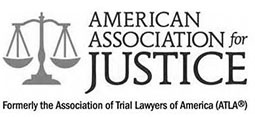Ways To Prevent Child Sexual Abuse In Your Church
The Church is notorious for its prevalent sexual abuse cases. Today, sexual abuse still occurs in the Church. With sexual abuse so prevalent, learning the ways to prevent child sexual abuse in your Church can significantly benefit your children. To keep your kids safe at Church, keep reading to learn how you can prevent sex abuse at your church.
History of Sex Abuse in The Church
Accusations of sexual abuse in the Catholic Church go back decades, with some of the earliest cases on record beginning in the 1960s. Before widespread sexual abuse was made public by news outlets in the early 2000s, it is believed that the Church would attempt to cover up accusations of sexual abuse within the organization.
Since then, local dioceses of the Catholic Church have released the names of 5,100 clergy members that are possible sexual abusers. Many of these men are living out their lives like ordinary people today.
Besides releasing these names, the Catholic Church has taken other steps to address abuse in the church. Among these steps include:
- Adopting a zero-tolerance policy for sexual abuse starting in 2002.
- Reconciliation events for victims, like Healing Masses and retreats.
- Some dioceses across the US have begun training staff on recognizing the signs of sexual abuse.
- Releasing a manual meant to guide people through dealing with sexual abuse cases in their church.
How To Identify Sexual Abuse In Church
Identifying sexual abuse in the Church isn’t as straightforward as you may think it to be. Sexual abuse can be secretive and subtle. Most children know and trust their abuser, making it hard for them to distinguish between right and wrong.
To identify sexual abuse happening to your child in the Church, look for some general telltale signs of sexual abuse in children:
- Sudden changes in eating habits.
- Uncommon knowledge of sexual topics.
- Change in behavior.
- Self-harm.
- Returning to behaviors from infancy or younger childhood (thumbsucking, etc.).
- Sudden fears of being alone at night.
- Avoiding removal of clothing.
- Sudden disinterest in favorite activities.
If you notice any of these signs in your child, you should continue looking for signs of abuse and talk to the child if you are concerned.
Common Traits of Sexual Offenders
Unfortunately, sexual offenders are very good at blending into society. They are often friends, neighbors, or trusted adults in a child’s life. Here are some common traits and characteristics of sexual offenders:
- Spending a lot of their time with children.
- Cultivating dependent relationships with children.
- Touching children often and pushing their physical boundaries.
- Controlling behavior.
Prevent Child Sexual Abuse In Church
You shouldn’t wait until there is proof of sexual abuse to do something. There are many ways to prevent child sexual abuse in the church. These include:
- Talking to children. Talking to children and teaching them what is and isn’t appropriate is a great way to prevent sexual abuse. Letting kids know that they have the power to say “no.”
- Preventative procedures. Churches can implement preventive procedures surrounding children. For example, use a two-adult rule where at least two adults must be with children at all times.
- Take action. By filing a lawsuit against your child’s abuser, you prevent them from ever harming another child.
- Educate Church staff. Make sure that all staff at your church understand how to recognize the characteristics of a sex offender and the signs of a child being sexually abused.
Get A Free Case Review
The Massey Law Firm is committed to helping victims of sexual abuse reclaim their lives and seek the justice they deserve. If your child is a survivor of clergy sex abuse, call our office today at 602-955-0055 and a member of our team will give you a free case review. While we can’t always ease the emotional burden of the experience, we always work as hard as possible to get you the proper justice and financial compensation you deserve.
Tags: Catholic Church, Catholic Church Sex Abuse, Clergy Sex Abuse, Prevention


